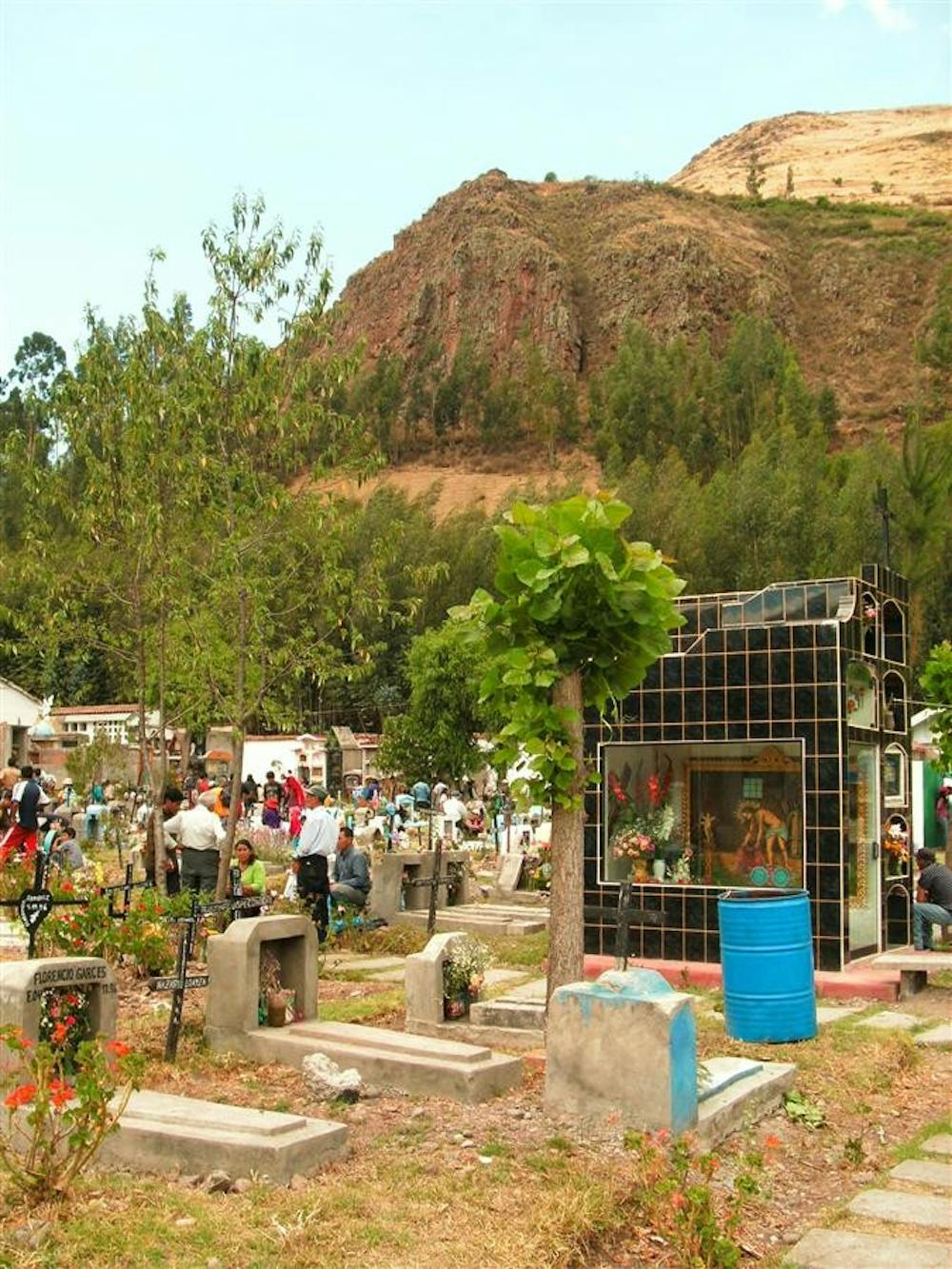The Day of the Dead, the twin holiday of the Day of the Living, is often associated with Mexico, but the holiday is by no means limited to one country. In fact, the roots of the holiday in Peru stretch much deeper. Every Nov. 2, the graveyards of Peru fill with people.
I spend the day in Calca, a smaller town in Cusco province, where my host family takes me to the “Jardines de la Paz,” or the “Gardens of Peace.” It’s easy to find the graveyard – for several blocks, the whole area is full of music, dancing and Catholic paraphernalia.
The drinking starts in the early morning and continues all day.
The graveyards are overrun with families and vendors; you can buy flowers, holy water or votive candles everywhere. The shouts of the venders mix with the sounds of children playing ball among the tombstones and of the men with pickaxes removing weeds from the graves of loved ones.
My host mother and I spend a few minutes looking for her brother’s grave, which is one of the more expensive ones. It’s easy to tell – if it’s not stacked upon other graves, it’s probably very expensive.
In fact, if someone no longer pays the graveyard fees for a loved one, the remains are removed from the site. So you have to watch over the dead in a very real sense.
But that hardly enters into the day of celebration.
What separates the Day of the Dead in Peru from the same holiday in Mexico is the communication with the dead. In the times of the Incas, important people were mummified; they were then consulted on business matters and retained their property rights. This persists today in the way the people feel they are communicating with the dead.
While in both countries they leave the food that the dead preferred in their lifetime and celebrate around their graves. In Peru there is a sense that the dead are literally listening from their graves and not just visiting spirits.
The dead join in the celebration by drinking the holy water and fermented corn beer, or chicha, that is poured over their graves. Watching the people lean over the graves and talk in low voices is almost enough to convince me that the dead really will talk back.
My host nephew, 5-year-old Marcello, puts his feet on a family grave and is immediately scolded by his 6-year-old cousin, Valeria.
“He’s dead, he doesn’t care,” Marcello insists.
Wagging a finger, Valeria says, “Just because he’s dead doesn’t mean he can’t hurt.”
Speaking with the deceased

Get stories like this in your inbox
Subscribe



